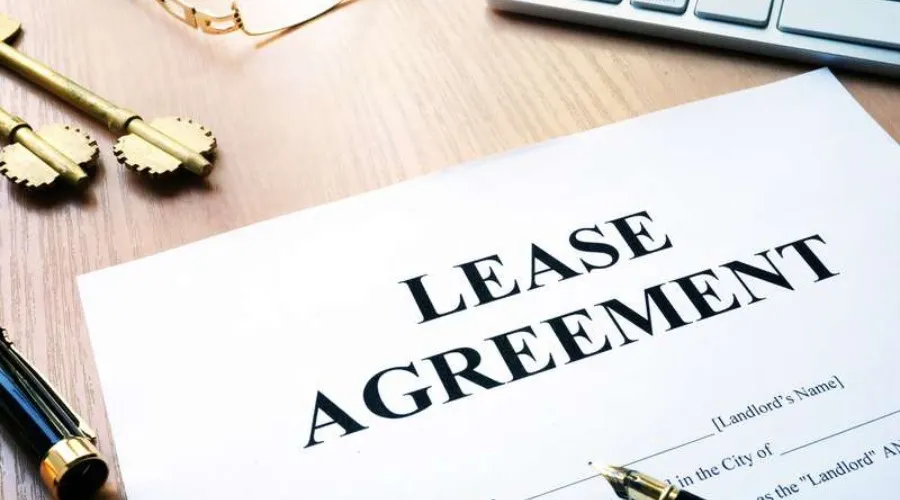Understanding the 2025 eviction process in Alabama is essential for landlords who want to stay compliant and avoid costly legal issues. Whether you're dealing with nonpayment, lease violations, or ending a month-to-month tenancy, following the correct steps is crucial. In this complete guide, LeaseRunner walks Alabama landlords through the legal eviction timeline—from serving notice to obtaining a court order—based on the latest state laws.
What Landlords Must Know About Alabama Uniform Residential Landlord and Tenant Act
If you’re a landlord in Alabama, it’s crucial to understand the Alabama Uniform Residential Landlord and Tenant Act (AURLTA), found in Alabama Code § 35-9A. This law lays out your responsibilities and rights—and failing to follow it could cost you. Learn more about Alabama landlord-tenant laws to stay compliant.
The "no self-help" rule is absolute
Under § 35-9A-104, landlords cannot force tenants out by changing locks, cutting off utilities, or removing belongings. These actions—known as self-help evictions—are strictly illegal in Alabama.
Instead, you must file a formal eviction through the courts, starting with proper notice (like a 7-day notice for nonpayment, per § 35-9A-421(b)) and waiting for a judge to order removal. Violating this can lead to serious consequences—up to three months’ rent in damages, plus attorney’s fees.
The “second breach” rule in lease violations
When a tenant violates the lease (for example, keeping a pet without permission), § 35-9A-421(c) lets you issue a 14-day notice to cure. If they fix the issue in time, the lease continues. But if they repeat the same or similar violation within six months, you can serve a 7-day unconditional termination notice—with no second chance to fix it. Just make sure to document everything.
Tenant legal defenses can delay eviction
Even if you follow the rules, tenants may try to delay or block eviction using legal defenses. Here are the most common:
- Retaliation claims: If you try to evict soon after a tenant reports safety or repair issues, they might argue retaliation under § 35-9A-407.
- Notice errors: If your notice doesn’t meet Alabama’s legal standards—wrong timing, missing details—it can get thrown out.
- Habitability issues: If your property lacks basics like hot water or heat, tenants may legally withhold rent or delay the eviction.
- Discrimination claims: Evictions based on race, religion, disability, or other protected traits could violate the Fair Housing Act.
If you're unsure about any of these risks, run a quick eviction history check on tenants before leasing.
Legal Reasons to Evict a Tenant in Alabama
Alabama law outlines specific legal reasons landlords can evict tenants. Understanding these helps ensure you follow the proper eviction process in Alabama.
Nonpayment of rent
Under Alabama eviction laws, rent is considered late if not paid one day after its due date—unless a grace period is mentioned in the lease. Before filing for eviction, the landlord must serve a 7-Day Notice to Pay.
If the tenant pays within those 7 days, the eviction stops. If not, the landlord can move forward with legal action. Make sure your lease complies with Alabama security deposit rules.
Lease violations
Every tenant must follow the lease agreement. If they break any rules, the landlord can issue a 7-Day Notice to Comply. If the tenant corrects the issue in time, the process ends there. Common lease violations include:
- Damaging property
- Unauthorized pets
- Smoking in restricted areas
Repeat violations within 6 months may lead to immediate notice to vacate without a chance to fix the issue. You can avoid ambiguity by using state-specific lease templates.

Criminal or dangerous activity
Serious misconduct—such as drug activity, violence, or illegal firearm use—can lead to immediate eviction. In such cases, landlords must provide a 7-Day Notice to Quit. Tenants cannot fix or reverse these violations; they must vacate the property within 7 days.
Material health or safety violations
Violations that impact health or safety—like neglecting trash disposal, damaging electrical systems, or plumbing issues—can also justify eviction. Landlords must issue a 7-Day Notice to Comply, giving the tenant a chance to correct the issue. If the tenant doesn’t act, the eviction may proceed.
Non-renewal of lease (holdover tenants)
If a tenant stays after their lease ends without a new agreement, they are considered a holdover tenant. In this case, landlords must give a 30-Day Notice to Vacate (for month-to-month leases). If the tenant still doesn’t leave, the landlord can file for eviction—even if the tenant hasn’t broken any rules.

How to Serve a Legal Eviction Notice in Alabama
Serving a valid notice is the first legal step in the eviction process in Alabama. If the notice is incorrect, the process may be delayed or dismissed in court.
Choosing the right type of notice
Under the Alabama Uniform Residential Landlord and Tenant Act (§ 35-9A-421), landlords must issue the right type of notice depending on the situation:
- Nonpayment of rent: Give a 7-day notice to pay or quit. If rent isn't paid within 7 days, you can proceed with eviction.
- Lease violations: Start with a 14-day notice to cure or quit. For repeat violations within 6 months, issue a 7-day unconditional quit notice—no chance to fix the issue.
- Month-to-month tenancy: To end the lease without cause, provide a 30-day written notice.
Note: Using the wrong notice can delay or void your eviction case.
Include required information in the notice
To be valid, your eviction notice must clearly state:
- Tenant’s full name and rental property address
- Reason for eviction (unpaid rent, lease breach, etc.)
- Deadline to pay, fix the issue, or move out (7 or 14 days)
- A clear warning that legal action will follow if they don’t comply
- Your signature and the date
Example: You owe $1,200 for August rent. Pay within 7 days or vacate the property at 123 Main St. Failure to comply will result in legal proceedings.
Use accepted delivery methods
Alabama law allows three legal delivery methods (§ 35-9A-421(a)):
- Hand delivery to the tenant
- Leave with a responsible person at the tenant’s home or workplace
- Post and mail: Attach the notice to the front door and mail a copy via first-class mail
Note: Always keep documentation of delivery—like a signed receipt or affidavit—in case you need to prove it in court.

7 Key Steps in the Alabama Eviction Process
Need to evict a tenant eviction process in Alabama? Here’s a simplified overview of the legal eviction process landlords must follow under the Alabama Uniform Residential Landlord and Tenant Act (AURLTA).
Step 1 – Serve the proper eviction notice
Before taking legal action, landlords must give tenants proper written notice as required by § 35-9A-421:
- Late rent: 7-day notice to pay or vacate.
- Lease violation: 14-day notice to fix the issue or leave; second violation (within 6 months) = 7-day notice to vacate.
- Month-to-month leases: 30-day notice to terminate without cause (§ 35-9A-441).
The notice must state the tenant’s name, address, the reason for eviction, the deadline to comply, and the landlord’s intent to file a lawsuit. Delivery must follow legal methods like hand delivery, leaving it with someone suitable, or posting and mailing.
Step 2 – File an eviction complaint in county court
If the tenant doesn’t comply, the landlord must file an Unlawful Detainer complaint in the local district court. Include the lease, eviction notice, and proof of noncompliance. Filing fees usually range from $200 to $300. A court date is typically scheduled within 7–14 days.
Step 3 – Serve summons & complaint
The tenant must be served the summons and complaint at least 6 days before the hearing. A sheriff, constable, or process server can deliver by:
- Handing it directly to the tenant.
- Leaving it with a responsible resident.
- Posting and mailing if direct delivery fails.
Landlords must have proof of service to proceed.
Step 4 – Tenant’s response period or default judgment
The tenant has 7 days to file an answer. They may claim defenses such as improper notice, retaliation, or unsafe living conditions (§ 35-9A-407). If there’s no response, landlords can request a default judgment.
Step 5 – Court hearing: what to expect
If the tenant responds, both parties go to court. Landlords should bring the lease, payment history, notices, and witnesses if needed. Tenants may raise legal defenses. The judge will decide whether to approve the eviction or dismiss the case. Most hearings last under 30 minutes.
Step 6 – Obtain a final judgment & Writ of Possession
If the judge rules in favor of the landlord, a final judgment and Writ of Possession are issued. This document allows the sheriff to evict the tenant. It’s usually granted within 7 days. Landlords must pay a fee (around $50–$100) to obtain the writ.
Step 7 – Sheriff Lockout + post-writ vacate period
The sheriff will schedule a lockout, typically 7–10 days after the writ is issued. The tenant is removed and the locks are changed. Tenants may have 48–72 hours to collect personal belongings. If items are left behind, landlords must follow Alabama’s laws on handling abandoned property (§ 35-9A-423).
Eviction Timeline and Costs in Alabama
If you're a landlord navigating the eviction process in Alabama, it’s important to understand the steps, legal deadlines, and potential costs involved. Here's a clear breakdown based on state law.
Key Documents to Prepare for Eviction in Alabama
Before you head to court, gather these key items to support your eviction case under Alabama law.
Lease Agreement
The lease confirms the tenant’s obligations under § 35-9A-421. It should list the names of both parties, property address, rent amount and due date, house rules, and termination terms. A signed copy is required in court.

Notice to Quit (and proof of service)
This notice starts the eviction process. It must include the tenant’s name and address, the lease violation (e.g., unpaid rent), and the deadline to fix it—typically 7 days for nonpayment, 14 days for other breaches. Valid proof of service includes a signed receipt, sheriff’s affidavit, certified mail, or a photo of the posted notice.
Payment records and history
For nonpayment cases, provide a rent ledger showing amounts due and paid, along with receipts, bank statements, or canceled checks. Include any late fee notices to support the full balance owed.
Photos or documentation of property damage or violations
If eviction is for damage or rule violations, include dated photos or videos, inspection reports, and witness statements. These support your claim under § 35-9A-421(c).
Communication logs (emails, texts, warnings)
Keep copies of texts, emails, and written warnings related to rent or rule violations. Dated notes from phone calls can also help confirm you gave proper notice before filing.
Example: An email warning the tenant they owe $1,200 by August 1 can support your case timeline.
4 Common Eviction Mistakes Alabama Landlords Should Avoid
Avoiding these common missteps can help you stay compliant with Alabama eviction laws and protect your rental business.
1. Serving the wrong notice or missing deadlines
Under Alabama Code § 35-9A-421, the wrong type of notice—or missing a deadline—can get your case thrown out. Here’s what’s required:
- Nonpayment of Rent: 7-day notice to pay or move out
- Lease Violations: 14-day notice to fix the issue or vacate
- Second Violation (within 6 months): Only 7 days’ notice
- Month-to-Month Leases: 30-day notice to end the tenancy
Each notice must clearly include the tenant’s name, property address, the reason for eviction, and the deadline to comply. Make sure to deliver notices properly (in-person, to a suitable party, or by posting and mailing) and keep proof of service.
2. Attempting self-help eviction (e.g., lockouts)
Self-help eviction is illegal in Alabama under § 35-9A-104(b). That means you can't change the locks, shut off utilities, or force tenants out without a court order. Doing so could cost you up to three months’ rent in penalties, plus attorney fees (§ 35-9A-407). Always go through the legal eviction process in Alabama.

3. Not documenting rent, damage, or communication
Solid documentation strengthens your case during the eviction process in Alabama, especially if the tenant disputes rent payments or property damage claims. Make sure to keep:
- Payment records: Rent ledgers showing due dates and balances
- Violation evidence: Photos, videos, or inspection reports
- Written communication: Save emails and texts about any disputes
Good records back up your claims and protect against tenant pushback.
4. Using non-compliant lease templates
A poorly written or non-compliant lease can delay eviction proceedings. Your lease should include:
- Rent amount, due date, and penalties for late payment
- Rules about property use (e.g., pets, guests)
- Termination clauses that follow § 35-9A-421 and § 35-9A-441
- Required disclosures under § 35-9A-202
To avoid issues, use an Alabama-specific lease template or consult with a landlord-tenant attorney before renting.
Conclusion
Understanding and avoiding these common mistakes is essential for landlords navigating the eviction process in Alabama. From serving proper notices to using legally compliant lease agreements, following the right legal steps protects your rights and prevents costly delays. When in doubt, consult legal counsel or use verified resources tailored to Alabama law.
FAQs
Q1. What mistakes can cause the eviction process in Alabama to fail?
Serving the wrong notice, missing deadlines, or lacking documentation can cause the eviction process in Alabama to fail. Illegal actions like lockouts or utility shut-offs also violate state law and may lead to penalties. Always follow legal procedures and keep proper records.
Q2. How do you start the eviction process in Alabama?
Begin by serving a valid eviction notice based on the reason (e.g., nonpayment = 7 days). If the tenant doesn’t comply, file an unlawful detainer lawsuit in court. The eviction process in Alabama must follow state law to be enforceable.
Q3. What makes an eviction notice valid in the eviction process in Alabama?
A valid notice must include the tenant’s name, address, reason, and deadline to comply. It must be delivered properly—personally, to someone at the unit, or posted and mailed. This step is crucial in the eviction process in Alabama for court approval.



